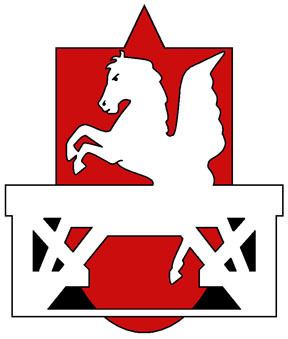Branch Army | ||
 | ||
Active November 1943 – 8 May 1945 Engagements World War IID-DayBattle of the Bulge | ||
The 352nd Infantry Division (352. Infanterie-Division) was a formation of the German Army during World War II. Deployed on the Western Front, the division defended Omaha Beach on D-Day, 6 June 1944.
Contents
Formation and strengths
The 352nd was formed in November 1943 in France, commanded by Generalleutnant Dietrich Kraiss from 6 November 1943 until it was destroyed in July 1944. At that time, as a result of severe personnel losses, German infantry divisions were generally reduced to six battalions. The 352nd, however, retained its full complement of nine battalions. In early March 1944, Field Marshal Erwin Rommel began strengthening the layout of the Normandy defenses, which were in a deplorable state. The 716th Infantry Division was spread paper thin over a 100 km long coastal front, with few beach obstacles and bunkers.
Rommel made the decision to split this front in half, by stationing the 716th Division on a shortened 47 km long 'Caen zone', and stationing the new 352nd Infantry Division on a 53 km long 'Bayeux zone.' But even with the benefit of all the fortifications under construction, this frontage was still far beyond what was considered prudent in German tactical doctrine. This led to a number of arguments between Rommel and Dietrich Kraiss. In the end, it was decided that two infantry regiments would be stationed forward, and one infantry regiment would be left in reserve.
D-Day
The 352nd began its coastal duty by improving the beach obstacles, emplacing mined stakes and timber structures. This involved not only cutting and hauling timber from miles inland, but also driving stakes and piles deep into the sand. The first band of obstacles - about 250 yards (750 ft) out from the waterline at high tide - consisted of 'Belgian Gates' - reinforced iron frames with supports that were built atop rollers. Next came a band of mined stakes and log ramps, meant to tear the bottoms out of landing craft or tip them over. Finally, there was a row of metal obstacles, including 'hedgehogs', made of steel rails. Although the Germans had attached mines to many of the obstacles, few of them were waterproofed, and corrosion had long since taken its toll of many of the explosive devices.
By the time of June 1944, many of the coastal strongpoints in their sector were still being manned by personnel from the 726th Infantry Regiment, of the neighboring 716th Division. As a tradeoff, one infantry battalion from the 352nd Division were placed under the command of the 716th Division to help shore up their defenses. In the 'Bayeux zone', 914th regiment was stationed in the west, 916th regiment was stationed in the east, while 915th regiment was in reserve to the south. The soldiers of the 916th and 726th Regiments occupied slit trenches, eight concrete bunkers, 35 pillboxes, six mortar pits, sites for 35 Nebelwerfer, (multi-barrel rocket launchers) and 85 machine-gun nests. The defenses were clustered in strongpoints.
Early on 6 June 1944, a Kampfgruppe (battle group) from the 915th Grenadier Regiment, which was the only reserve element of the 352nd Infantry Division, was diverted away from Omaha and Gold beaches and the 101st Airborne Division's drop zones. The unit spent the morning of 6 June searching the woods for parachutists, believing an airborne division had landed in the area but which turned out to be dummies dropped as part of Operation Titanic.
The 916th Grenadier Regiment saw action during D-Day (Operation Overlord), opposing the US 1st and 29th Divisions at Omaha Beach. The division defended the bluffs above the beach for several hours, inflicting heavy casualties, before being overwhelmed. The 916th retreated in the morning hours of 7 June after the commander, Colonel Ernst Goth, could no longer hold the positions retaken in the night of 6/7 June. The rest of the division saw heavy fighting in the bocage (or hedgerow) country near Saint-Lô against the Americans.
After the invasion
The 352nd was destroyed in the fighting following the invasion; on 30 July it was declared no longer fit for combat. It was reconstituted as the 352nd Volksgrenadier Division in September and fought in the Battle of the Bulge. Thereafter, it fought defensively around Trier and the Moselle until it was destroyed again in mid-March 1945, with only the remnants escaping across the Rhine at Worms. It was partially reconstituted one last time as a battlegroup in mid-April and surrendered near Darmstadt.
Werner Pluskat
Major Werner Pluskat, who was featured in Cornelius Ryan's book The Longest Day, was in the 352nd Artillery (Artillerie Regiment) and fired his guns on Omaha Beach until he ran out of ammunition. He was forward observer on 'WN60 – Resistance Point 60' above the beach on the Eastern flank.
Order of battle
The 352nd's order of battle on the eve of the Allied Invasion was as follows (NB: the artillery component is also shown):
